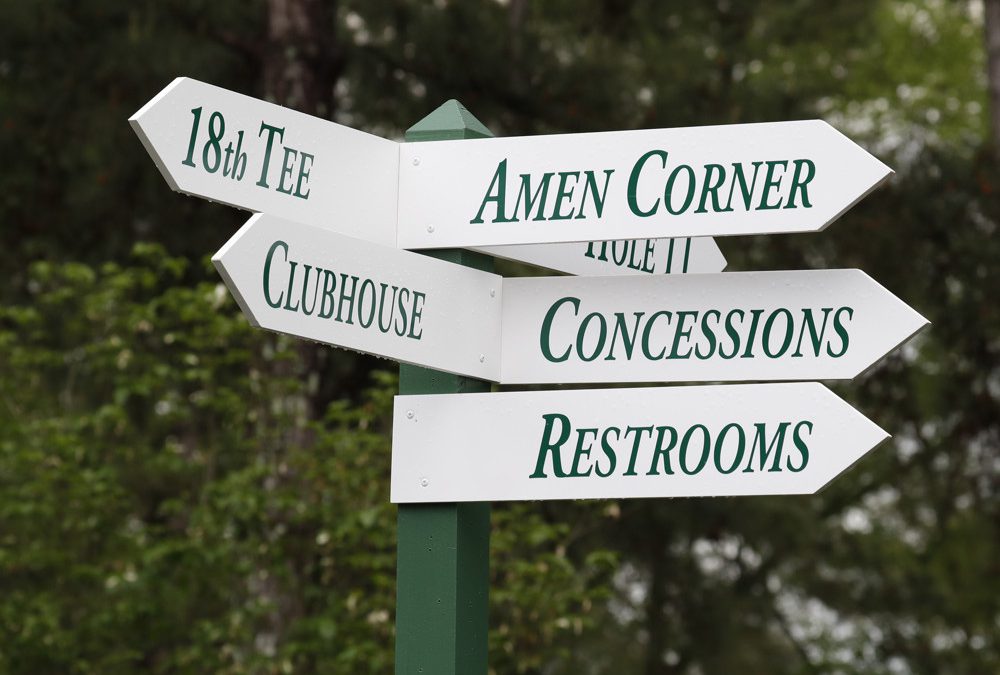Golf is one of the most volatile sports available to us as DFS players. For tournament or GPP purposes, we want to embrace the high volatility and use the chaos to our advantage. This can lead to some wild swings in the short term when we aim for first-place finishes in top-heavy payouts.
But even in a highly volatile DFS sport like golf, we can still minimize our swings and realize steady returns in “cash games” if we can correctly minimize the volatility better than our opponents. (Cash games in DFS refer to any contest in which roughly 50% of the field gets paid out, such as head-to-heads, double-ups, or 50/50s.)
On most slates, my view of the ideal cash lineup is along the lines of the ETR projection-based optimal with a few small pivots made. Choosing how many and which pivots to utilize in our lineups will make all the difference in our results. With that in mind, here are five key strategies for beating PGA DFS cash games.
1. Select your contests appropriately
This point is true for any DFS endeavor, but I think it is important enough to reiterate in most DFS strategy articles. For cash-game purposes, it is important to distinguish between head-to-heads and double-ups. 50/50s can be thought of in the same vein as double-ups.
In double-ups, we face binary outcomes and our goal is to finish in roughly the 55th percentile of all lineups or better. Whether you finish in the 60th percentile or the 100th percentile, you will simply double your buy-in. Similarly, there is no worse punishment for finishing in the 1st percentile rather than the 40th — either way, you’re losing your full buy-in.
In head-to-heads, however, we are either rewarded or punished for each incremental shift in our percentile outcomes.
This leads us to a non-binary outcome where we can smooth out our gains and losses by having both smaller wins and smaller losses when our lineups finish in the 60th or 40th percentiles rather than the 100th or 1st. For example, if your lineup finishes in the 40th percentile of all head-to-head lineups, you will only lose roughly 60% of your buy-ins rather than your full amount.
Whether you prefer a binary outcome or a smoother outcome should be dependent on your risk tolerance and how you prefer to manage your bankroll. One macro advantage of head-to-heads though is that DraftKings will not collect rake on head-to-heads that result in a tie. In the long run, with enough volume, being able to avoid the rake can add up to a massive savings. In double-ups, we are always required to pay the rake.
2. De-risk by prioritizing recent form
We should be able to tell a story about why every golfer in our lineup is a good play for cash purposes, and that should extend beyond “he projects the best.” Projection models typically rely on a combination of short-term and long-term results in predicting outcomes. This is very useful for all formats, but particularly for GPPs.
For cash purposes, I prefer to rely more heavily on recent form, as it helps us infer a more complete story about each golfer.
For example, let’s imagine a golfer who typically finishes inside the top 40 every week and racks up a win or two every season. Then, we suddenly see this golfer miss a few cuts and stop demonstrating the upside he has in the past. In the short term, projection models will likely continue to show positive values on this golfer because of his long-term results. But maybe he is working through a swing change, has an injury, or is in the midst of an equipment update. Due to the lack of the broad reporting in golf that we have for other sports, we may not find out what caused this player’s downswing until weeks or months later. Although we can be rewarded for taking risks on the timing of this player’s rebound in GPPs, we have no reason to take on that additional risk in cash.
3. Focus on getting all six of your golfers through the cut
While it may seem straightforward that you want all of your golfers to make the cut, this point should not go overlooked. In any given week, roughly 10-20% of all lineups will have 6/6 golfers make the cut. If we can make 6/6 lineups more often than the field does, we will have a massive advantage over our opponents. Even if the additional golfer that makes the cut for our lineup (and that our opponent doesn’t have) only makes a few birdies on the weekend, that could still be an additional 20 fantasy points for our lineup.
Often, DFS players will prioritize including more “stars” in their lineup at the expense of also including more “scrubs” who are unlikely to make the cut. In these scenarios, the lineup’s success is dependent upon at least one of two unlikely outcomes occurring: Either the stars must win, or the scrubs must make the cut. It is important to recognize here that in a field of 140+ golfers, even the best players in the world are unlikely to finish in the top five in any single event.
Note that if you have The SOLVER optimizer add-on, it will calculate how often we project your lineup to get 6/6 through.
4. Don’t forget about upside
Getting 6/6 golfers through the cut and finding a strong floor should be a top priority, but we still need to make sure we have upside in our lineups. In most weeks, having six golfers make the cut will not be enough to yield a profit in cash if all six golfers finish 50th or worse in the standings.
How much upside we can afford to build into our lineups will certainly be slate-specific. On many slates, I will first identify how much cash-worthy value is available to us before identifying how many stars my lineup can afford. From there, we can use our projections and other content to identify which stars provide the best combination of floor and ceiling. Note that in addition to base projections, our projections also include both ceiling projections and odds to make the cut for each golfer.
Another way we can build upside into our lineups is by simply reviewing golfers’ historic results. If a golfer never finishes inside the top 10 and does not make many birdies, perhaps he has less upside than another golfer who projects similarly but has a demonstrated history of being able to contend in tournaments and win on tour. We should be careful not to infer too much about upside from historical results, but I do believe that it’s helpful as a final tiebreaker.
5. Prioritize ball striking
One way to help us make cash lineups full of made cuts is to prioritize ball strikers. For GPP purposes, we don’t care how a golfer scores; we just want to have the top scores possible. For cash purposes though, we can minimize volatility with strong ball striking. Players that are especially accurate off the tee and consistently find greens on approach will be less likely to have “blow-up” scores from hitting their tee shot out of bounds or their approach shot into a pond. Whether or not these players are actually more likely to win a given event on average, they should at least be less likely to have a triple bogey in their first round that ruins their chances of making the cut that week.
The PGA Tour’s strokes gained metrics can help us identify which golfers excel in different areas of the game, such as ball striking. There are numerous free resources around the industry that provide strokes gained metrics broken out by category. Skylar Hoke and Cody Main also provide lots of good nuggets every week here at ETR in the Value Report and Top Plays articles.


